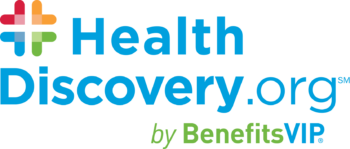Pardon the cliché, but bloated Rx fees are a hard pill to swallow. If this has been your experience, maybe you’re wondering if there is a way to reduce your prescription costs.
As prices keep rising, some people cope by not filling new prescriptions or slacking off on taking maintenance drugs, like blood pressure or diabetes meds. This can, in turn, cause more health issues and cost even more money down the road.1
There are more options for finding low-cost prescription drugs than there were even five years ago, but did you know you can price-shop your medications? Or that your pharmacy may not always offer the lowest price for your medications?
Is there any relief?
Yes! Here are three prescription buying tips to consider:
1. Retail Store Discounts
Some large retail stores, including Target, Walmart and many grocery store chains, offer discounts on popular brand name and generic medications at low or no cost without insurance. Why? This drives traffic to their stores. These “loss leaders” attract shoppers who are likely to buy a few items when they pick up their medication at the in-store pharmacy.
Like any other purchase, shopping around can reduce prescription costs.
The prices of brand name and generic drugs that are discounted vary from store to store. It pays to investigate and look for the best deal to reduce prescription costs.
ShopRite, a grocery store chain in the Northeastern United States, has been dispensing free diabetes medications since 2009. Similarly, the Southeastern U.S. grocery chain, Publix, offers the generic type 2 diabetes drug metformin at no cost. The chain also offers 14-day supplies of several prescribed antibiotics at no cost. Walmart offers several drugs at $4 for a 30-day supply and $10 for a 90-day supply. The key to this strategy is to keep “impulse purchases” to a minimum.
2. Mobile Apps
Not surprisingly, the web now makes it easier to track down the cheapest generic prescription medications. Two examples are GoodRx and Blink Health, which both provide medication prices and direct customers on buying options.
GoodRx collects drug prices from thousands of pharmacies to show where a specific medication can be purchased at the lowest price. They also aggregate coupons and discount programs from manufacturers. Blink Health partners directly with drug manufacturers and negotiates lower prices for medications. Blink Health conveniently lets consumers pick up medications at a pharmacy or order them by mail. Also, coupons on these sites often make the price of a medication lower than the copay through the prescription plan.
3. Manufacturer’s Coupons
Prescription drug manufacturers often offer discounts and coupons for their drugs. If a medication costs more than $50, for example, the manufacturer may cover part of the balance. To access a coupon, just contact the manufacturer to enroll in the savings card program.
Some manufacturers will cover the balance of a prescription cost and contribute the balance toward the employee’s deductible. After just a month or two of a higher-priced prescription drug and a manufacturer’s discount, an employee may satisfy their deductible and pay only the copays for the rest of the plan year.
Learning how to shop for the best prescription prices can help to keep you healthy and contain costs. Now everyone can start to feel better.














